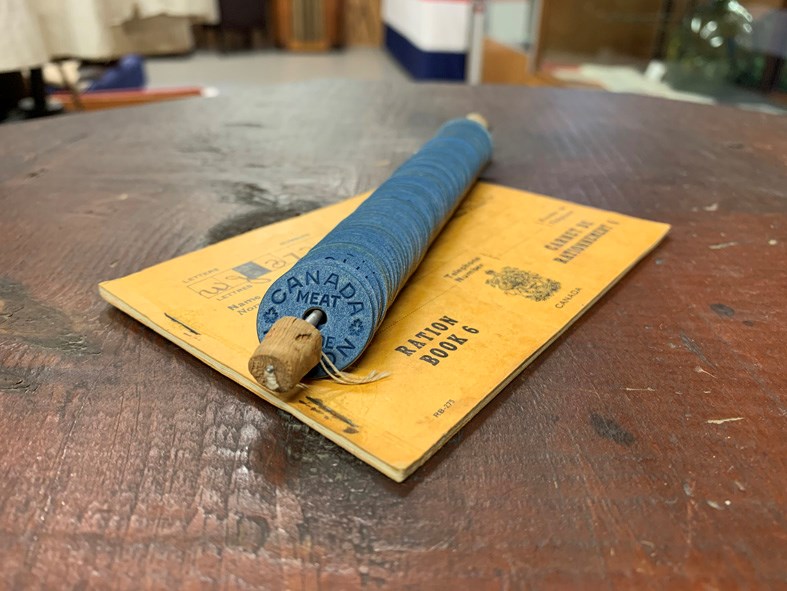World War II ravaged the world from 1939 – 1945. What was once known as “normal,” was no longer the norm and many families were pushed way beyond the lines of their comfort zones. One example of this was food rationing. Food like meat, flour, cheese, and eggs was needed to send overseas to Britain, prisoners of war, refugees, and soldiers. In fact, over half of the wheat and flour in Britain during the war came from Canada. Food such as coffee, sugar, and tea were imported from other countries and were thus rationed as well.
In 1939, The Wartime Prices and Trade Board was formed and began handing out ration coupons in 1942. Families would fill out an application form, and the ration coupons were mailed out to each household. Each ration booklet came with a postcard that could be sent back once the coupons had been used up. This indicated more ration coupons were needed. Coupons could only be ripped off in the store to prevent their misuse.
In the beginning, two pounds of meat was rationed out per person every week which was sometimes, too much for an individual person and would go bad before it could be used. In 1944, meat coupons were suspended, and meat tokens were introduced. With that, people did not have to purchase all the meat with one coupon, only to have it spoil if it was too much.
During the war, with the lack of sugar, eggs, and milk, people found new ingredients to replace the ones in short supply. The tomato soup cake used tomato soup instead of milk, and chocolate chip cookies were made no longer with butter, but chicken fat. Leftovers, of course, were not thrown away: bones and fat could be donated to the war effort.
The Canada Food Guide was also created during this time but was originally called Canada’s Official Food Rules. This told people how much of each food group they should eat.
The blue meat ration token is a telling part of Canadian, and even North American history. Similar tokens and coupons were used in the United States during war times also. Ration booklets, meat tokens, and gas coupons are held in the first annex at the Virden Pioneer Home Museum.
Make sure you visit the museum to check out the rest of our interesting war memorabilia. Tours are now up and running by appointment.
For information, call 204-748-1659 or email virden_pioneer_home@mymts.net
Submitted by Madeline Peters




